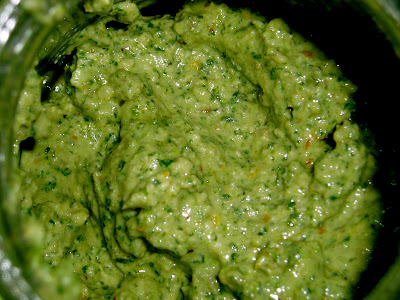Several friends have recently asked me for tips on growing their own herbs. Now, to be honest I'm not quite sure how this happened. I am no gardener. In fact, I've killed plenty of plants. Nevertheless, I've managed to keep a nice little herb garden in my window sill. I've learned the hard way that once you over-water a plant it is hard to keep it from dying. For this reason, I never use pots that do not have a hole in the bottom to let the extra water leak out. I've also learned to let the soil get a little bit dry between waterings. It is really neat to see a plant looking pitiful and dry in the morning, water it, and return in the afternoon to find it full of life and energy.

If you are thinking of starting your own herb garden start with the herbs that are best-suited to your style of cooking and eating. When you are ready to use them trim the longest sprigs down to a point where they still have a few leaves on them - they need those chlorophyll factories. You can also just pick off a few leaves at random whenever you want, but they do need the occasional trimming to keep from getting too scraggly. It really is quite easy and always being able to cook with fresh herbs is incredibly rewarding.
You can even put a combination of plants in the same pot. For example, I have one grouping of thyme, marjoram, and oregano; and another of lavender, oregano, and thyme (they're actually still in a shoe box). All-in-all I have two kinds of thyme, two kinds of oregano, marjoram, cinnamon basil, lavender, and orange mint. I also frequently take a few sprigs from the rosemary plants up on campus. With all of that I hardly ever buy any herbs other than parsley, and I never cook with dried herbs (the flavor just doesn't compare for most dishes).
Aside from using the herbs in any recipe that calls for them, here are a few other super-quick ideas:
- chop and add to roasted or sauteed vegetables
- sprinkle on any cooked meat
- add to scrambled eggs or an omelette at the end of cooking
- throw into a pasta dish at the end
- add whole leaves to a salad for the occasional extra kick of flavor
- add mint leaves to a glass of tea or juice
Eating fresh herbs also comes with health benefits. While there is a lot of variation from one plant to the next, generally speaking they have very high concentration of antioxidants and other compounds that help to reduce inflammation and have anti-bacterial properties.
A few weeks ago I realized that everything had grown quite a lot and needed a major trimming. I thought of making a pesto but it turned out to be more of a paste. Because I had such a mixture and they all had small leaves I didn't think I would be able to achieve the traditional texture of pesto. But this paste is delicious - added to béchamel sauce and poured over pasta, thinned out with olive oil and drizzled on top of an omelette, and spread thinly on good bread or toast.
Herb Paste Recipe:
1 cup of fresh herbs (leaves only, well-rinsed and dried)
1 clove garlic
1/3 cup walnuts
2 1/2 T olive oil
1 T lemon juice
1 T water
pinch salt
In a food processor, pulse the clove of garlic first to make sure that you don't end up with any giant chunks.
Add the herbs and walnuts and pulse until everything is broken up.
Add the lemon juice and water and let the food processor run until they are well-combined.
Stream in the olive oil while processing, adding more or less depending on your preference.
Add a pinch of salt, or leave it out if you prefer.




























